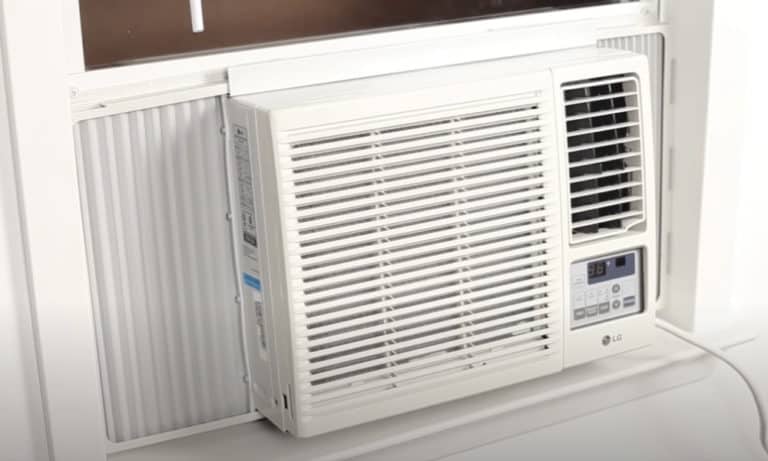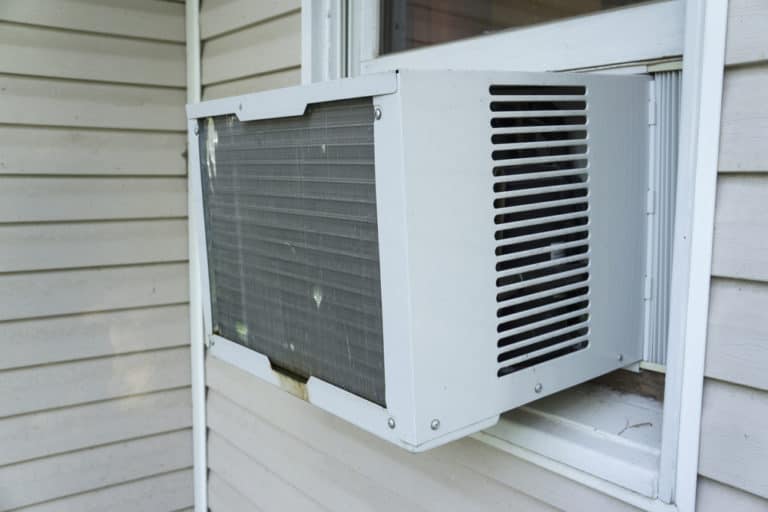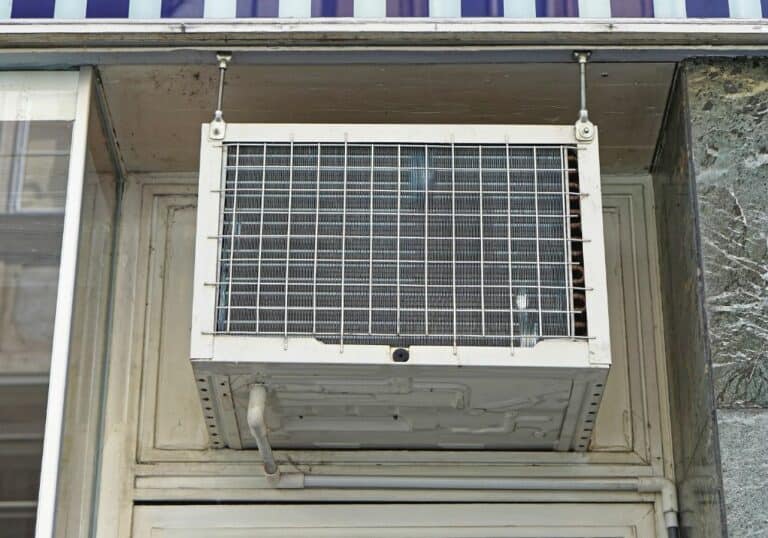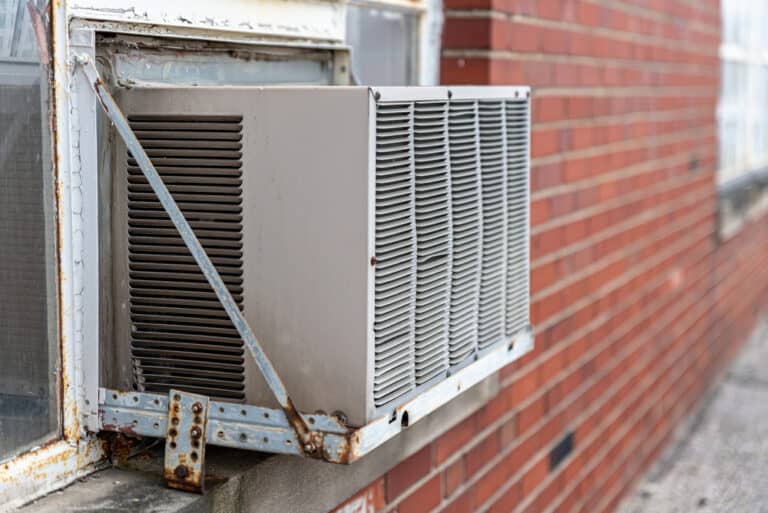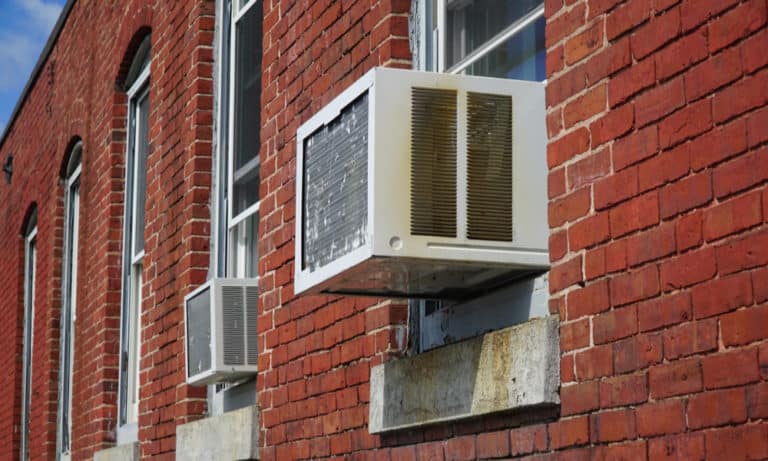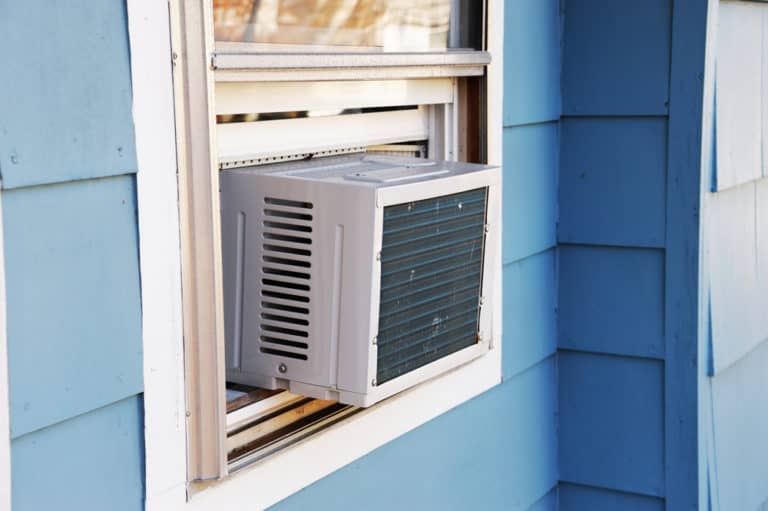Installing air conditioners in a wall can be an effective way to cool down your home or office. But what does it take to install an AC unit in a wall – and can a window air conditioner be installed in a wall? This is a common question people have, oftentimes because they like the appeal of a wall unit, yet already own a window unit.
In this blog post, we’ll tell you the difference between window and through the wall air conditioners, as well as explore the installation process for each so that you can make an informed decision about which type of cooling system is right for you.
So keep reading if you want to learn more about how easy (or difficult) it is to install window or through the wall air conditioning units!
Can I Install A Window Air Conditioner Through The Wall?
No one likes to get too hot in the summer, so installing an air conditioner is a must. There are common window air conditioners and through-the-wall air conditioners, let’s define both first and see if you can install a window air conditioner in a wall.
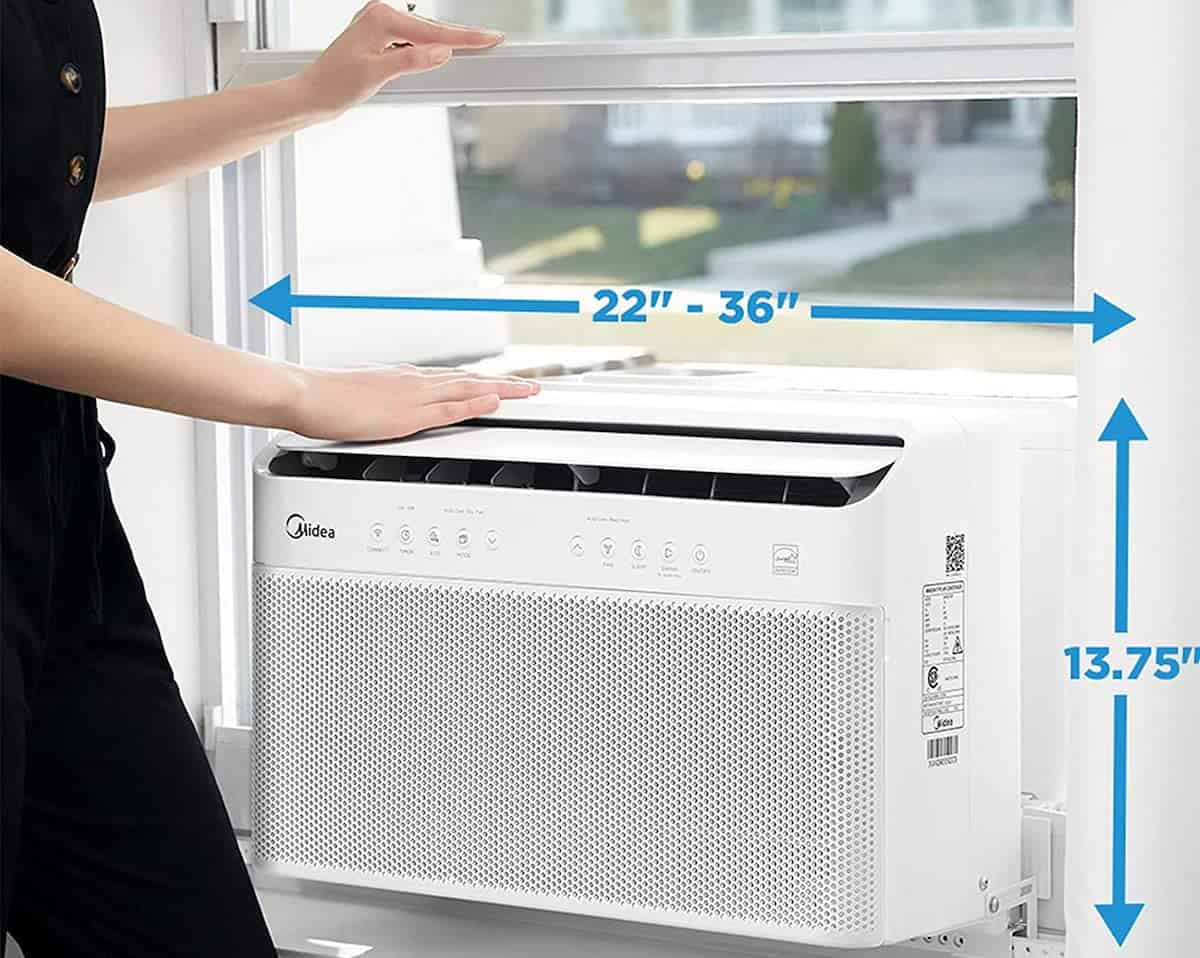
A through the wall air conditioner is a cooling unit that is mounted into an exterior wall. Unlike window AC units, they are installed in a wall opening and they fit inside a metal sleeve or wall sleeve, which is secured to the outer walls of your home.
Window air conditioning units are typically installed in window openings that require different wall supports. In addition to this, window air conditioning units are designed to use the vents on the side of the unit, which is not possible when installed through a wall.
It’s easy to get them confused, but there are actually several differences between window air conditioners and through the wall air conditioners. Unfortunately, window air conditioners are not meant to be interchangeable with true wall air conditioners. So it is tough to install a window air conditioner unit inside a wall is almost impossible.
The only time this is possible is with an appliance called a window/wall slide-out chassis air conditioner. This is a special air conditioner that can be used in either a window or a wall, provided that the wall is not very thick – including whatever siding is on the exterior of the wall. It won’t work if any of the materials on the outside of your home will cover the side vents in any way.
Window Air Conditioner Vs. Through the Wall Air Conditioner
So, if you cannot exchange one unit for the other, which one is perfect for you and your home?
Let’s look at each type of air conditioning unit in more detail, so that you know which one to pick.
Window Air Conditioners
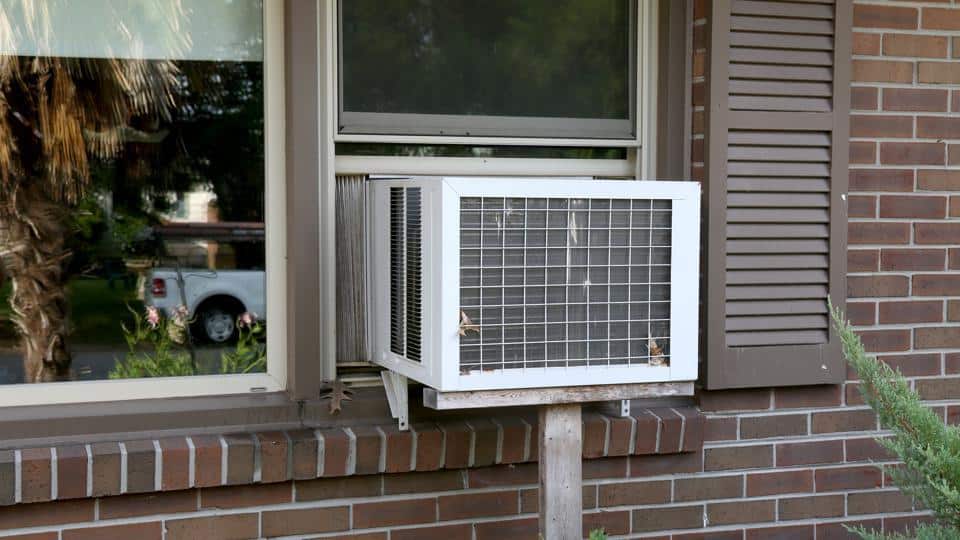
Just like any appliance, window air conditioners have many pros and cons. In a nutshell, here are the benefits and drawbacks of having one of these in your home.
Pros
- Ease of installation: They are typically easier to install because they are smaller and lighter than wall units and also because there is no need for drilling or cutting into walls. They also often come with an “installation kit” that includes all the necessary parts to get it set up, such as window insulation, mounting brackets, and bolts – of course, you will need to make sure you have the right window size before you start installing your window AC unit, but grabbing dimensions off your window is a pretty straight forward process.
- Low cost: Another benefit is that they tend to cost less than wall units, so if cost is a major factor for you window air conditioners can be an attractive option.
- Movable: A pro about having a window air conditioner is that it can be easily moved or removed if need be. You’re not stuck with it in one place all summer, so if you want to move your window unit from window to window or even just remove it for the season, it’s a breeze! That’s definitely not something you can do with a through the wall unit.
Cons
- Low energy efficiency: One issue is air leakage and loss of energy efficiency. Since window air conditioners are installed in window openings, they are not as airtight as wall units, so the cold air that is produced by the window unit can escape through window frames and seals – not to mention that window ACs don’t always provide as much cooling power at wall units and so they may need to use more energy to cool down a large room. This means you won’t be getting the full benefit of your window AC’s energy efficiency.
- Unattractive: Another con is that window units can detract from the exterior appearance of your home, and of course obstruct your view through the window, so if you’re looking for something that is aesthetically pleasing, window air conditioners may not be the best option.
- Low safety: Lastly, safety can be an issue with window air conditioners. Since window units are usually placed on the outside wall, they also can be an easy target for thieves and may not offer as much security.
Through the Wall Air Conditioner
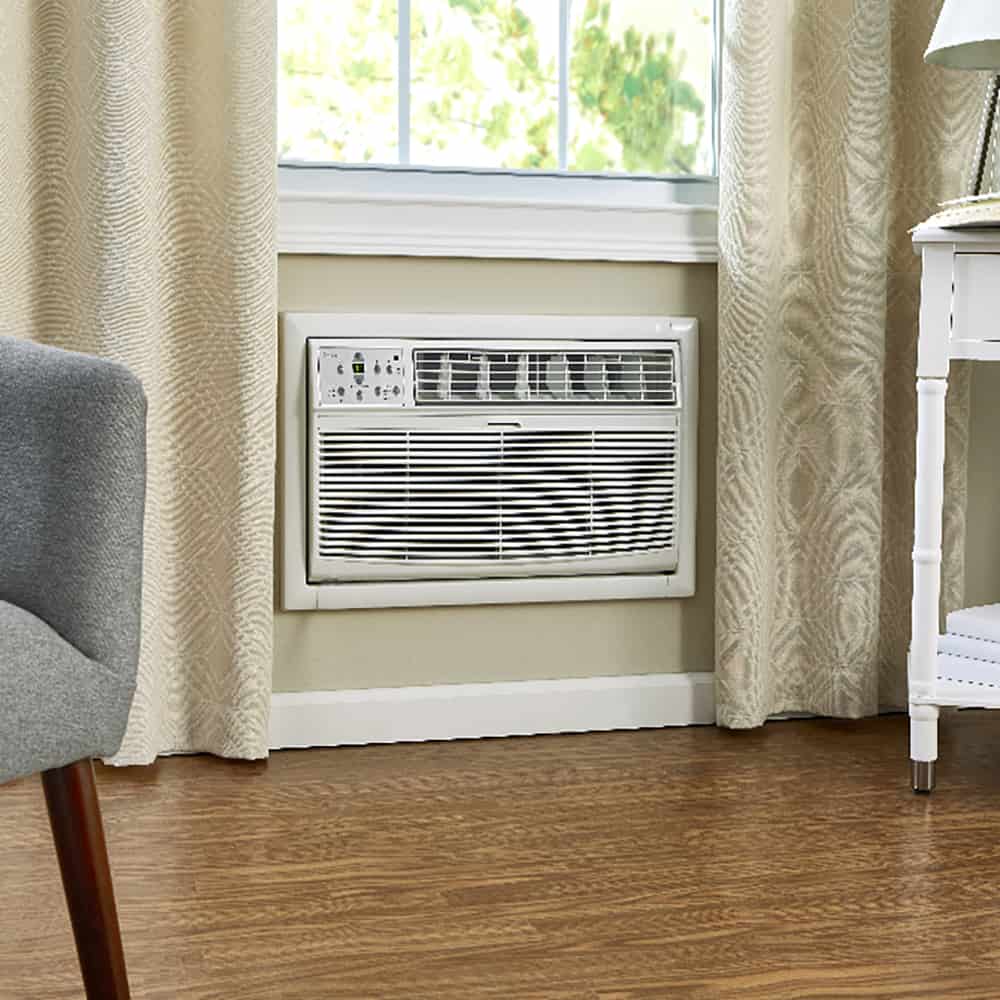
Likewise, there are numerous advantages and disadvantages to installing wall ACs in your home. Here’s what you should know about this type of air conditioner before you make your purchase:
Pros
- High efficiency: One main benefit is efficient power. Wall air conditioners are more powerful than window models, so they can cool down a large room or space quickly and efficiently. Wall units are also more energy efficient than window units, so you’ll get a better return on your investment over time.
- Secure: Additionally, wall units are more secure than window units since they’re installed inside a wall. This makes them much harder for a burglar to remove for home access.
- Quiet: Lastly, wall air conditioners are usually quieter than window ACs, which is always a plus!
Cons
- High cost: The major drawback of wall ACs is that they require more work and cost to install. This means that you’ll need to hire a professional to do the job, which can add to the overall cost. In addition, installing a wall unit usually requires some basic knowledge of electrical wiring and plumbing, so it’s best left to an experienced installer.
- Immovable: Another issue is that the spot for the unit is pretty permanent. Once the wall unit is in, it’s not as easy to move or remove like window units.
How to Install a Window Air Conditioner Vs. a Through the Wall Air Conditioner
Now that you know the difference between window and through the wall air conditioners, let’s take a look at how each type of unit is installed.
Window Air Conditioner Units
Installing window AC units requires a few basic tools, such as a measuring tape, a screwdriver, and a drill, for example.
Here is a brief step by step guide:
- Measure the window opening for your window AC unit before purchasing (To install, you will want to follow the manufacturer’s instructions, as each unit will be different, depending on its size and weight.)
- Use your drill to create small holes in each corner of the window sill
- Secure a mounting bracket with bolts or nails in order to support the unit
- Slide the window air conditioner into the window opening, making sure it is flush against the wall.
- Seal around the window’s edges with a foam weather stripping for added insulation.
Voila! Your window AC unit is now installed and ready to cool down your space.
Through the Wall Air Conditioner Units
We’ve briefly mentioned this before, but we highly suggest getting a professional carpenter and an electrician to install the unit.
Installing wall AC units requires basic tools like caulk and a utility knife, as well as more advanced tools, such as a stud finder, hammer, circular saw, and drill.
Here is a brief step by step guide:
- To get started, you will want to locate a suitable spot for your wall unit (on an outside wall) that is free from obstructions.
- Then use a stud finder to locate the wall studs and mark two straight lines with a pencil to outline the area where your unit will go.
- Next, your carpenter will use a circular saw to cut out the opening – careful not to cut through any electrical wires!
- Afterwards, the carpenter will install a header and footer into the wall, as well as a metal sleeve, to support the unit.
- Lastly, the carpenter will replace, mud, texture, and paint any needed drywall, install the unit into the wall sleeve, caulk around the outside to keep moisture out, and install the foam insulation around the unit instead to stabilize the temperature.
Congratulations! You now have a beautiful wall unit to keep your house nice and cool.
Conclusion
When deciding whether to install window or wall AC units in your home, there are several factors to consider. Window air conditioners cost less but may not offer as much cooling power or energy efficiency as wall units. On the other hand, wall air conditioners require more installation effort but provide superior cooling power and security.
Ultimately, the decision comes down to personal preference and budget. Whichever type of AC unit you choose, make sure to read up on any safety precautions listed in the manufacturers’ instructions before installing it in your home or office space.
Do you have any other questions about the air conditioners? Let us know in the comments below. Stay cool!

